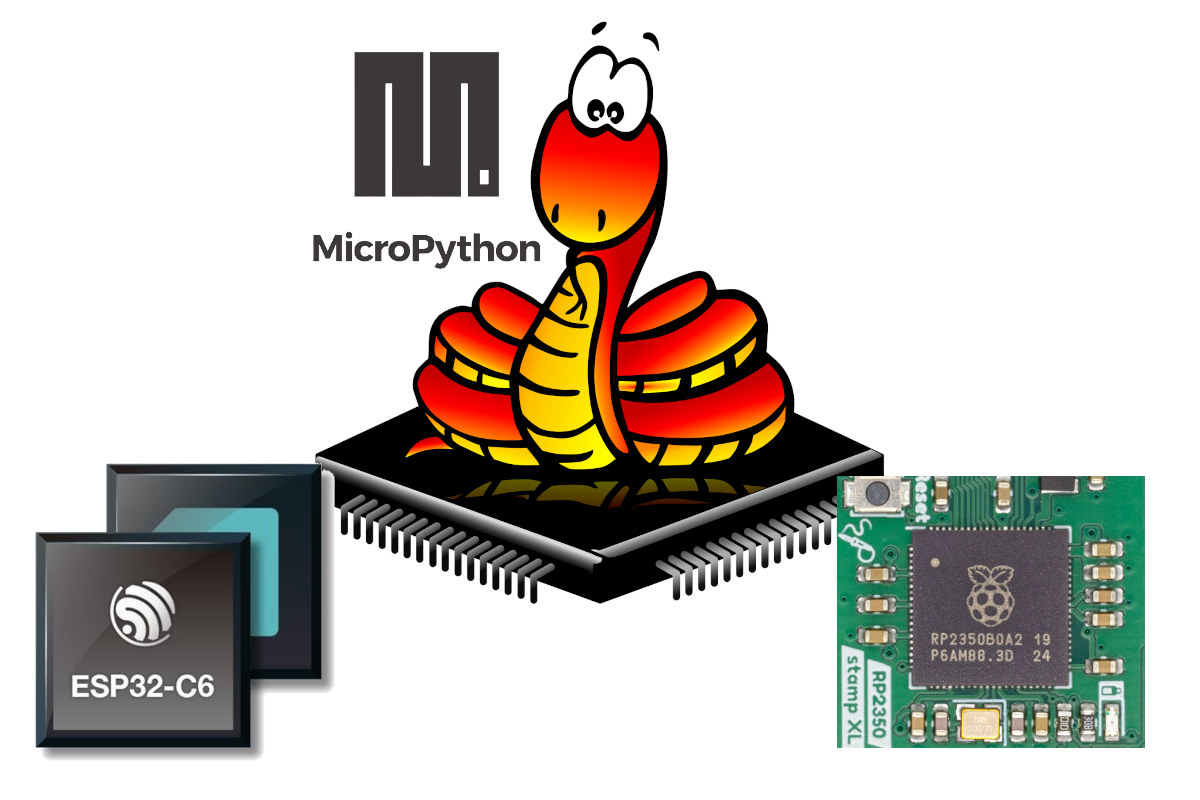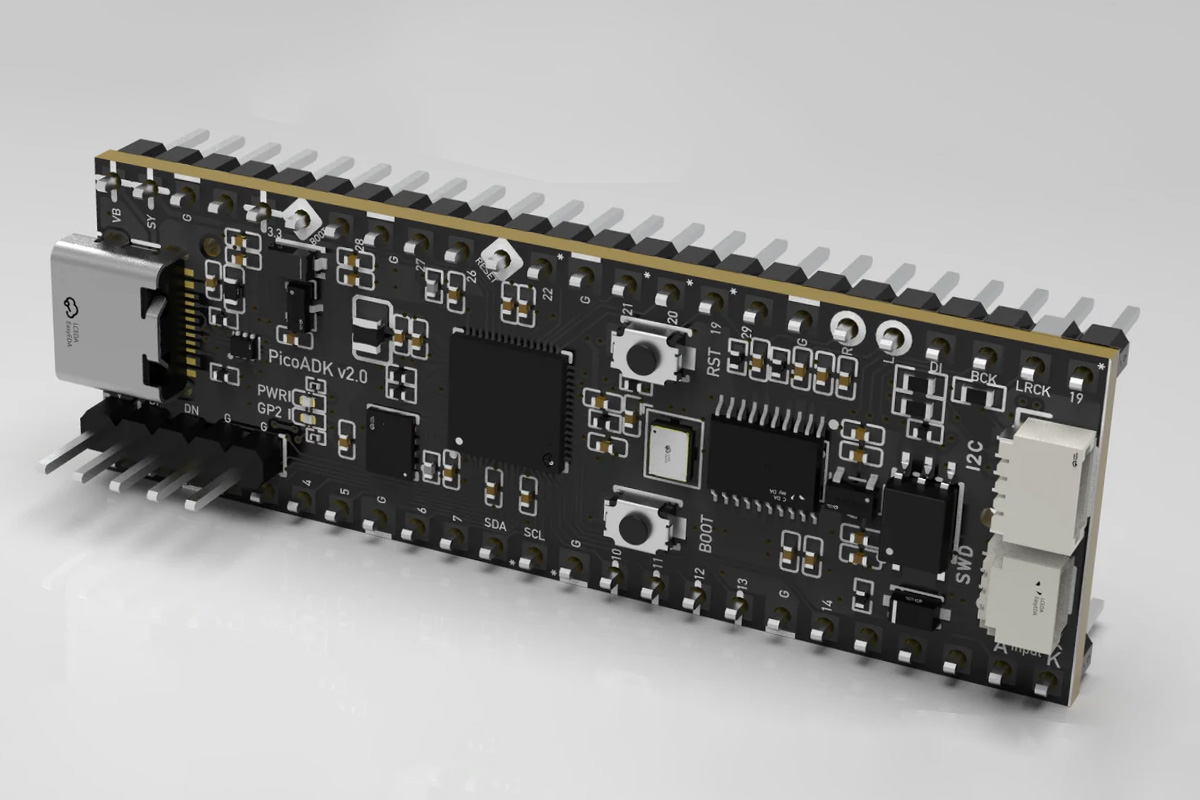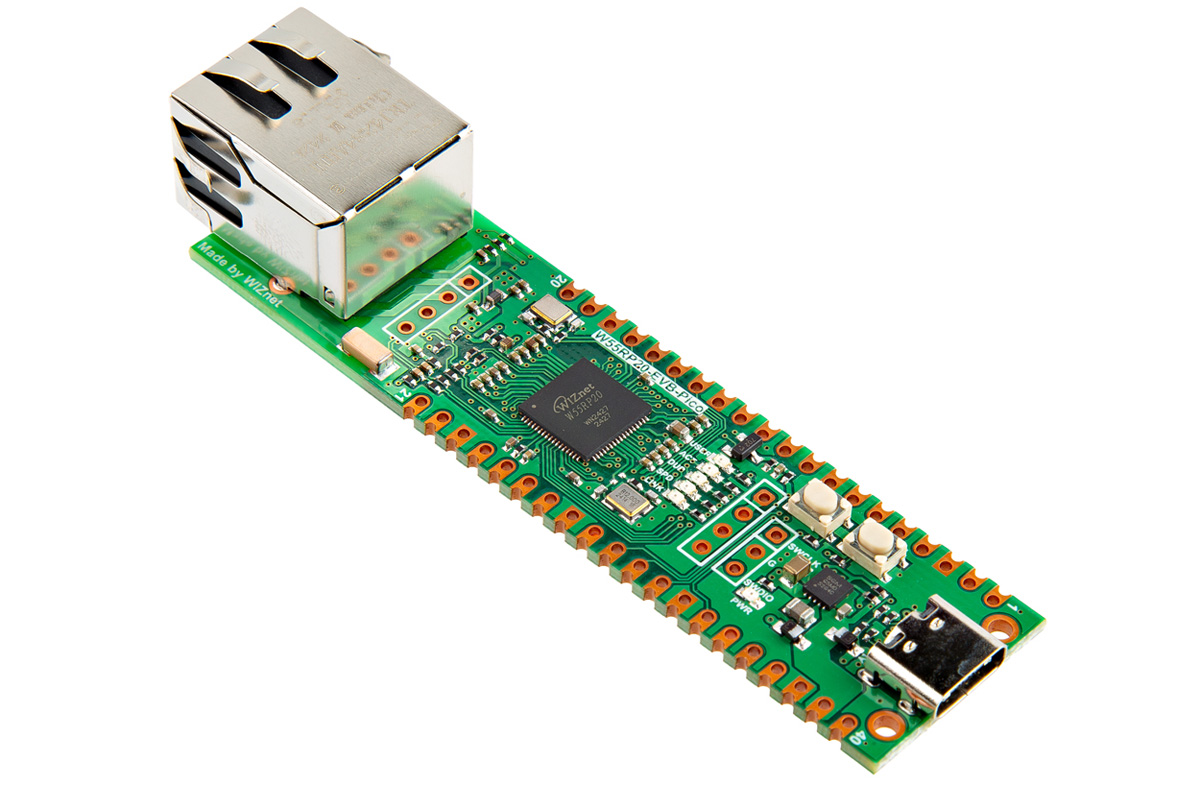MicroPython has become one of the most popular ways of programming microcontrollers, and the just-released MicroPython v1.24 adds support for the widely-used Raspberry Pi RP2350 and Espresif ESP32-C6 microcontrollers and a range of other changes. Those include improved RISC-V support with native code generation, an updated Zephyr v3.7.0 RTOS with threading support, unified TinyUSB bindings across ports, a portable UART IRQ API, and enhanced mpremote recursive copy. Damien George goes into more detail about the RISC-V improvements: … include an RV32IMC native code emitter, native NLR and GC register scanning implementations for 32- and 64-bit RISC-V, support for placing RV32IMC native code in .mpy files and also freezing it, and RISC-V semihosting support. Testing for RISC-V is done with the qemu and unix ports, and the support is utilised in the esp32 and rp2 ports. The Raspberry Pi RP2350 comes with both Arm Cortex-M33 and RISC-V cores, and the good […]
1.28-inch round color display features Raspberry Pi RP2350, motion sensor, GPIO headers, metal case
Waveshare has recently launched the RP2350-LCD-1.28, a Raspberry Pi RP2350-based 1.28-inch round color display module with 240×240 pixel resolution and a 65K-color IPS panel. This board also features a rechargeable Lithium battery manager, a 6-axis IMU with a 3-axis gyroscope and accelerometer, multiple GPIO pins, and a USB Type-C connector for programming and power. Additionally, it supports USB 1.1 host/device support, temperature sensor, and 24 PWM channels, all configured for flexible I/O options. These features make this device useful for IoT, wearable tech, and embedded applications. The company also provides an optional CNC metal casing that provides durability and heat dissipation for portable or rugged applications. We have previously covered similar development boards with a round display such as the RP2040-powered 0.99″ rounded display, the ESP32-S3 LCD Driver Board, the SB-Components has launched Dual Roundy, and others, but it’s the first to feature the RP2350 microcontroller. RP2350-LCD-1.28 specification: Microcontroller – Raspberry Pi […]
Datanoise PicoADK v2 music synthesizer is a Raspberry Pi RP2350 board for audio experimentation
After the success of PicoADK v1, Datanoise has recently announced the launch of its PicoADK v2 music synthesizer built around the Raspberry Pi RP2350 MCU. The board supports projects like custom synthesizers, audio effects, and noise generation, and the 8 MB QSPI PSRAM of the RP2350 makes it ideal for memory-intensive applications such as long delays. Additionally, it features a SWD debug port, microSD card support, a MIDI-in circuit with an optocoupler, USB Type-C, user and power LEDs, and more. Previously, we have written about various similar synthesizer boards, like the Arduino-based MIDI controller, and we have seen products like the TinyLlama x86 retro computer, which uses the Raspberry Pi Zero 2 W as a MIDI synthesizer. PicoADK v2 music synthesizer specification Microcontroller – Raspberry Pi RP2350A MCU CPU – Dual-core Arm Cortex-M33 processor @ 150MHz Memory – 520KB internal RAM Storage – 8KB OTP Package – QFN-60; 7×7 mm Memory – Optional 8MB QSPI […]
RP2040 FlexiBoard is a bendable Raspberry Pi Pico clone made of flexible PCB (Crowdfunding)
[Update December 22: The project was previously called FlexiPi, but Raspberry Pi considered it infringed on its trademarks, so the name was changed to RP2040 FlexiBoard instead]. RP2040 FlexiBoard is a bendable Raspberry Pi RP2040 board made of flexible PCB with the same layout as the original Raspberry Pi Pico, but featuring a USB-C port instead of a micro USB port on the official board. This follows the Flexduino flex PCB clone of the Arduino UNO made by “EDISON SCIENCE CORNER”, but the smaller design of “TOP Gadgets” RP2040 FlexiBoard may make it potentially more useful since it could be inserted into tight or round enclosures. RP2040 FlexiBoard specifications: MCU – Raspberry Pi RP2040 dual-core Cortex-M0+ microcontroller @ 48 MHz (overclockable to 133 MHz) with 264KB SRAM Storage – 2MB QSPI flash USB – 1x USB Type-C 1.1 port used for power and programming Expansion 2x 20-pin 2.54mm pitch header […]
Wiznet W55RP20-EVB-Pico board features W55RP20 SiP with W5500 Ethernet controller and RP2040 MCU
Wiznet has recently released the W55RP20-EVB-Pico dev board, a compact board based around the W55RP20 SiP that fuses the Raspberry Pi RP2040 MCU and the W5500 Ethernet controller into a single IC, plus a 2MB flash chip for firmware storage. Just last month we wrote about W5100S-EVB-Pico2 and W5500-EVB-Pico2 dev boards, both the boards have a newer Raspberry Pi RP2350 MCU and external Ethernet controller (W5500 or W5100S). The RP2350 offers additional security features such as One Time Programmable (OTP) memory, secure boot, and Arm TrustZone technology, making it more suitable for secure applications. The W55RP20 on the other hand integrates a W5500 Ethernet controller and the RP2040 in a single SiP which is also pin-compatible with the Raspberry Pi Pico, making it easy to use existing Pico accessories and code examples. W55RP20-EVB-Pico dev board specifications: SiP– W55RP20 microcontroller MCU – Raspberry Pi RP2040 Core– Dual Cortex M0+ cores up […]
Pimoroni Pico Plus 2 W combines RP2350B MCU with Raspberry Pi RM2 Wi-Fi and Bluetooth module
Raspberry Pi released the Raspberry Pi Pico 2 a few months ago, featuring the new RP2350 chip. Despite several upgrades, it lacks wireless connectivity like Pico W. While there’s no official Raspberry Pi Pico 2 W yet, Pimoroni has developed an unofficial alternative, the Pimoroni Pico Plus 2 W, which integrates Wi-Fi and Bluetooth using a yet-to-be-formally-announced Raspberry Pi RM2 module and potentially set to appear in a future Pico 2W. The Pimoroni Pico Plus 2W board is powered by the Raspberry Pi RP2350B dual-core Arm Cortex-M33 microcontroller, features 16MB of QSPI flash with XiP support, 8MB of PSRAM, wireless connectivity, a USB Type-C port for power and data, and a Qwiic/STEMMA QT connector for breakout board integration. A few days ago, we covered the Pimoroni Explorer board, an electronic prototyping board built around the Raspberry Pi RP2350B chip. It features a 2.8-inch LCD screen, a speaker connector, and multiple […]
Jumperless V5 programmable breadboard is based on Raspberry Pi RP2350B, features a built-in power supply (Crowdfunding)
Jumperless V5 is a one-of-a-kind, programmable breadboard based on a Raspberry Pi RP2350B microcontroller that lets you skip the jumper wires and jump right into prototyping. It is described as “an Integrated Development Environment (IDE) for hardware.” The Jumperless V5 also removes the need for test equipment as it comes with built-in power supplies and can function as a multimeter, oscilloscope, function generator, and logic analyzer. As the name implies, the Jumperless V5 breadboard is a revamped version of the original Jumperless, with significant upgrades to make the board easier to use. The Jumperless V5 features a 14 x 30 LED matrix display under the breadboard, a probe for making connections and measurements, four ±8 V, 300 mA power supplies, daisy-chain headers, and overcurrent/overvoltage protection. The software-defined jumpers allow all points to be connected. The four individually programmable ±8 V power supplies, GPIOs, and management channels for voltage, current, and […]
Raspberry Pi AI Camera with Sony IMX500 AI sensor and RP2040 MCU launched for $70
We previously noted that Raspberry Pi showcased a Raspberry Pi Zero 2W with a Raspberry Pi AI camera based on a Sony IMX500 intelligent vision sensor at Embedded World 2024, but it was not available at the time. The good news is that the Raspberry Pi AI camera is now available for $70 from your favorite distributor. This follows the launch of the more powerful Raspberry Pi AI Kit designed for the Raspberry Pi 5 with a 13 TOPS Hailo-8L NPU connected through PCIe. The AI camera based on a Sony IMX500 AI camera sensor assisted by a Raspberry Pi RP2040 to handle neural network and firmware management is less powerful, but can still perform many of the same tasks including object detection and body segmentation, and works on any Raspberry Pi board with a MIPI CSI connector, while the AI Kit only works on the latest Pi 5 board. […]










